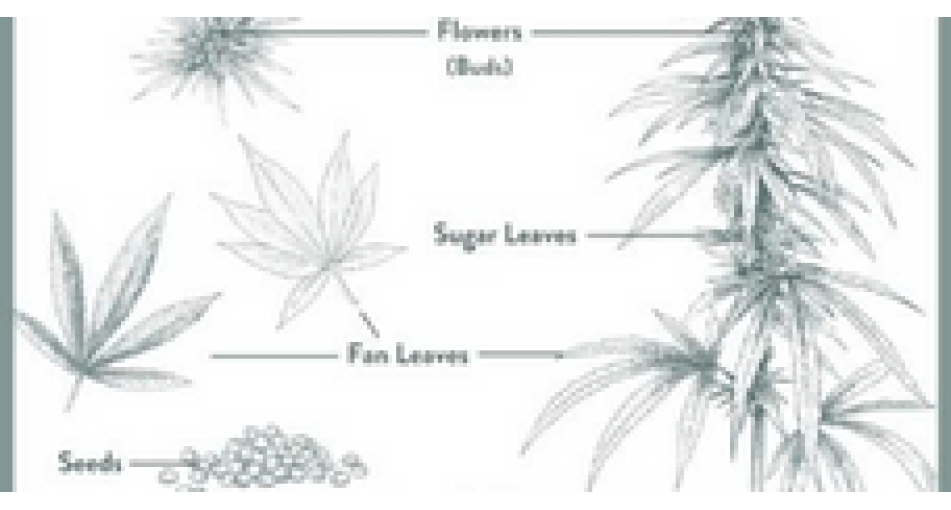
In general terms, a hemp bush is not difficult to describe - in terms of its structure, it differs little from other plants. It has thin and thick stems, carved leaves that have become a pop culture icon in their own right, and flowers. Marijuana has its own unique "modifications" that blend harmoniously with the "traditional" plant elements.
Important components of the cannabis bush
Cones (inflorescences), which are also called cola. In the second case, we mean one large and oblong cone (sometimes indicated in the description as the central cola) at the top of the stem, around which smaller inflorescences gather.
Pistils and stamens - from the course of botany, we recall that these elements are responsible for reproduction in plants. Marijuana has a bisexual system - "boys" with "girls" separately (but there is hermaphrodism, in which the bush has signs of both sexes). Cones give only female unpollinated plants. That is, when growing cannabis for medical or recreational purposes, male plants need to be planted in time so that they do not pollinate the female ones. The latter have pistils that look like hairs, while the "boys" have stamens. They look like bananas filled with pollen that burst and pollinate the "girls".
The sepals that form the calyx. When you look at them, you can only notice a cluster of not too large leaves, but inside there are trichomes that produce THC.
Trichomes are exocrine glands that produce a special resin. Its natural purpose is to repel pests from the plant, but as a result of chemical reactions that occur in marijuana, psychoactive THC and other compounds are formed.
Separately, it is worth noting that the cones, which are also called inflorescences, are, in fact, false fruits. During the flowering period, marijuana waits for pollination, but if it does not receive it, it forms what then becomes the grower's crop.
